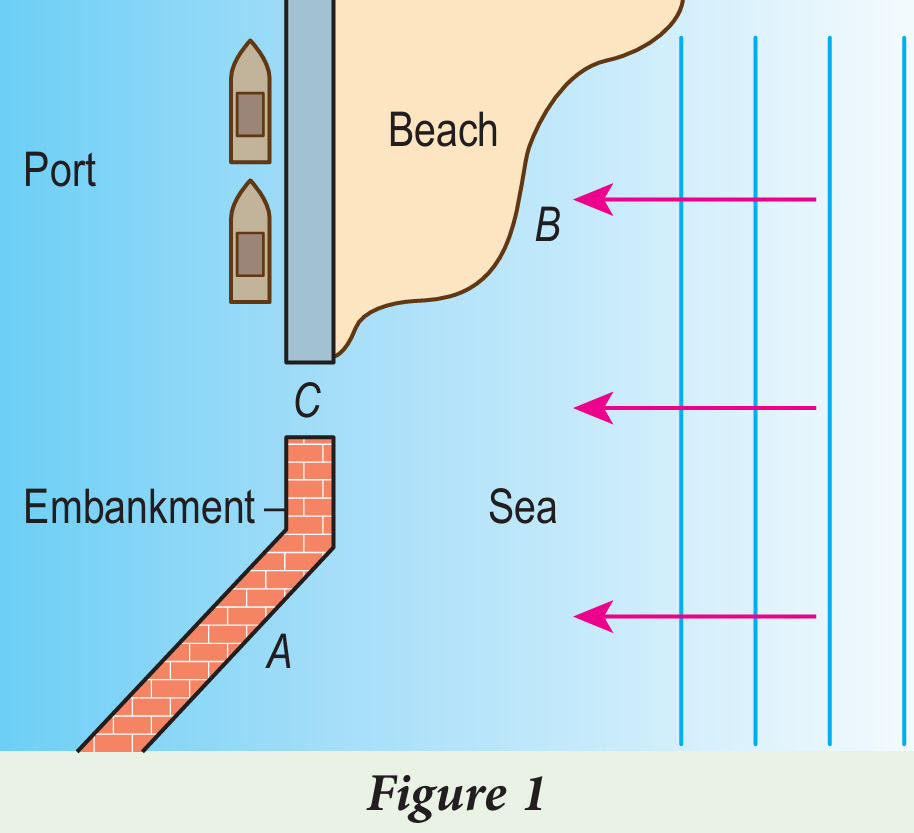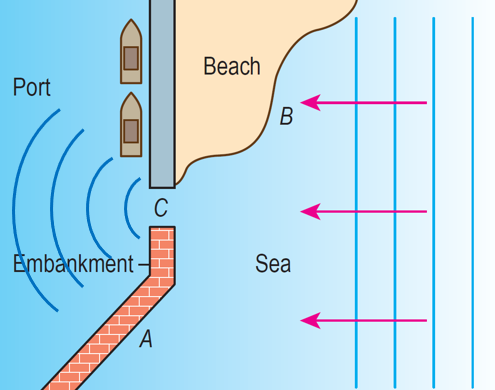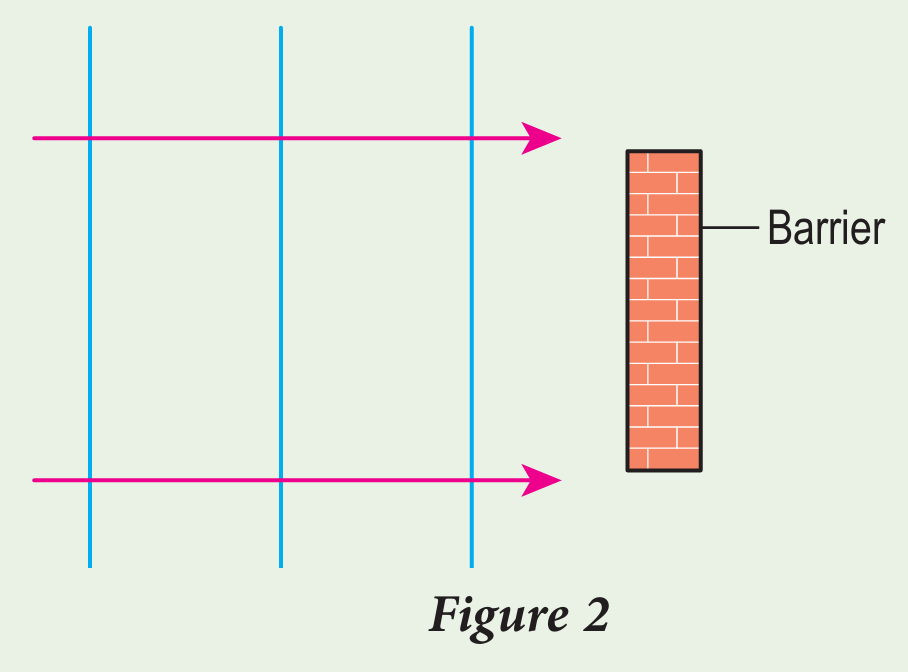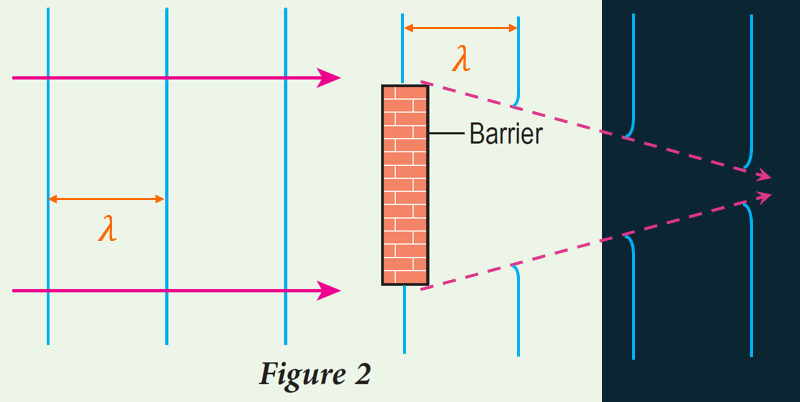Question 1:
Figure 1 shows a port and the area around it.

(a) State the wave phenomena that occur when sea waves
(i) collide with the embankment of the port at A,
(ii) move towards the beach at B, and
(iii) pass through the entrance of the port at C.
(b) Draw the wavefronts after the waves pass C.
(c) What is the effect on the waves if the entrance of the port is widened?
Answer:
(a)(i) Reflection
(a)(ii) Refraction
(a)(iii) Diffraction
(b)

(c) Less diffraction and higher amplitude compared to diffraction through narrow entrance.
Figure 1 shows a port and the area around it.

(a) State the wave phenomena that occur when sea waves
(i) collide with the embankment of the port at A,
(ii) move towards the beach at B, and
(iii) pass through the entrance of the port at C.
(b) Draw the wavefronts after the waves pass C.
(c) What is the effect on the waves if the entrance of the port is widened?
Answer:
(a)(i) Reflection
(a)(ii) Refraction
(a)(iii) Diffraction
(b)

(c) Less diffraction and higher amplitude compared to diffraction through narrow entrance.
Question 2:
Figure 2 shows the wavefront of water waves approaching a barrier. Complete Figure 2 by sketching the wavefront aft er passing around the barrier.

Answer:

Figure 2 shows the wavefront of water waves approaching a barrier. Complete Figure 2 by sketching the wavefront aft er passing around the barrier.

Answer:

